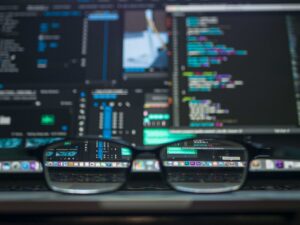AI television is a new concept that differs from traditional television in several ways. While traditional television relies on human actors, directors, and producers to create content, AI television leverages artificial intelligence algorithms to generate and produce shows. These algorithms are trained on vast amounts of data, including scripts, dialogue, and visual cues from existing shows and movies. They can then generate new episodes or even entire series based on this training data.
One example of an AI television platform is OpenAI’s “DALL-E,” which uses a combination of deep learning and natural language processing to generate images based on textual descriptions. Another example is “Rosebud.AI,” which uses AI to create virtual characters that can be used in television shows or movies. These platforms allow creators to generate content quickly and efficiently while also providing a level of creativity and novelty that traditional methods may not be able to achieve.
Understanding Synthetic Television and its Benefits
Synthetic television refers to shows that are entirely generated by AI algorithms without any human involvement. These shows are created using deep learning techniques that analyze patterns in existing shows and movies to generate new content. The benefits of synthetic television are numerous. Firstly, it allows for the creation of content that is unique and innovative, as AI algorithms can generate ideas and storylines that may not have been explored before. Secondly, synthetic television can be produced at a much faster pace than traditional television, as AI algorithms can generate episodes in a matter of hours or days rather than weeks or months. Finally, synthetic television can be produced at a lower cost, as there is no need to hire actors, directors, or producers.
One example of a successful synthetic television show is “Sunspring,” which was created by filmmaker Oscar Sharp and AI researcher Ross Goodwin. The show was entirely generated by an AI algorithm called “Jetson,” which analyzed a large dataset of science fiction scripts to generate its own script. The resulting show was surreal and nonsensical but garnered attention for its unique approach to storytelling. Another example is “The Next Rembrandt,” an AI-generated painting that mimicked the style of the famous Dutch painter. These examples demonstrate the potential of synthetic television and its ability to push the boundaries of creativity.
Advantages of AI Technology in Video Content Creation
AI technology offers several advantages in video content creation. Firstly, it improves efficiency and speed in video production. AI algorithms can automate various tasks such as video editing, color correction, and sound mixing, allowing creators to focus on more creative aspects of the production process. This automation saves time and resources, enabling faster turnaround times for video content.
Secondly, AI technology can lead to cost savings in video production. By automating tasks that would otherwise require human labor, companies can reduce their production costs significantly. Additionally, AI algorithms can analyze data and provide insights that help optimize production processes and reduce waste.
Lastly, AI technology ensures increased accuracy and consistency in video content. Human error is inevitable in any creative process, but AI algorithms can perform tasks with precision and consistency. This results in a higher quality of video content and a more seamless viewing experience for the audience.
Transforming Video Editing with AI Automation
AI automation has transformed the field of video editing. Traditionally, video editing required manual labor and expertise to cut, trim, and arrange footage. However, AI-powered video editing tools have automated many of these tasks, making the process faster and more efficient.
One example of an AI-powered video editing tool is Adobe’s Sensei. Sensei uses machine learning algorithms to analyze footage and automatically suggest edits based on visual cues such as motion, lighting, and composition. This saves editors time and effort by providing them with intelligent suggestions that they can easily implement.
Another example is Magisto, an AI-powered video editing platform that uses computer vision algorithms to analyze footage and automatically create professional-looking videos. Magisto can detect faces, objects, and scenes in the footage and intelligently arrange them to create a compelling narrative. This eliminates the need for manual editing and allows users to create high-quality videos with minimal effort.
Enhancing Video Production with AI Technology
AI technology is not limited to video editing; it can also enhance various aspects of video production. For example, AI algorithms can analyze scripts and provide insights on character development, plot structure, and dialogue. This helps writers and directors refine their scripts and create more engaging content.
Another area where AI technology enhances video production is in visual effects (VFX). VFX traditionally required complex software and skilled artists to create realistic effects. However, AI algorithms can now generate realistic VFX using deep learning techniques. These algorithms can analyze existing VFX footage and generate new effects that seamlessly blend with the original footage.
One example of an AI-powered VFX tool is NVIDIA’s GauGAN, which uses generative adversarial networks (GANs) to transform simple sketches into photorealistic images. GauGAN can generate realistic landscapes, objects, and even people based on simple sketches, making it a powerful tool for VFX artists.
The Role of AI in Personalizing Video Content

AI technology plays a crucial role in personalizing video content. Personalization involves tailoring video content to individual viewers based on their preferences, demographics, and viewing history. This can be achieved through AI algorithms that analyze user data and make recommendations based on their interests.
One example of personalized video content is Netflix’s recommendation system. Netflix uses AI algorithms to analyze user data such as viewing history, ratings, and preferences to recommend shows and movies that are likely to be of interest to each individual viewer. This personalization not only improves the user experience but also increases engagement and retention.
Another example is YouTube’s recommendation system, which uses AI algorithms to analyze user data and recommend videos based on their interests. YouTube’s recommendation system takes into account factors such as watch time, likes, and comments to provide personalized recommendations that keep users engaged and coming back for more.
AI Technology and its Impact on Video Advertising
AI technology has had a significant impact on video advertising. AI algorithms can analyze vast amounts of data to identify trends, patterns, and audience preferences. This allows advertisers to create targeted and personalized video ads that are more likely to resonate with their target audience.
One example of AI-powered video advertising is programmatic advertising. Programmatic advertising uses AI algorithms to automate the buying and selling of ad inventory in real-time. These algorithms analyze user data such as demographics, browsing behavior, and purchase history to deliver targeted ads to the right audience at the right time.
Another example is interactive video ads. Interactive video ads use AI algorithms to analyze user interactions with the ad and adapt the content in real-time based on their responses. This creates a more engaging and personalized ad experience for viewers, increasing the likelihood of conversion.
The Future of Video Content with AI Technology
The future of video content creation with AI technology is promising. As AI algorithms continue to improve and become more sophisticated, we can expect to see advancements and innovations in various areas of video content creation.
One potential advancement is the use of AI algorithms to generate realistic virtual actors. These virtual actors can be used in movies, television shows, and video games, eliminating the need for human actors and reducing production costs. Virtual actors can also be customized to fit specific roles and scenarios, providing creators with more flexibility and creative control.
Another potential innovation is the use of AI algorithms to generate personalized video content in real-time. This would allow for dynamic and interactive video experiences that adapt to each viewer’s preferences and behavior. For example, a news broadcast could be personalized to include stories that are of interest to each individual viewer, or a sports broadcast could provide real-time statistics and analysis based on the viewer’s favorite team.
Challenges and Limitations of AI Technology in Video Content Creation
While AI technology offers numerous benefits in video content creation, it also comes with its challenges and limitations. One challenge is the ethical implications of using AI to create synthetic content. As AI algorithms become more advanced, there is a risk of creating content that is indistinguishable from reality, which raises concerns about misinformation, manipulation, and privacy.
Another challenge is the potential bias in AI algorithms. AI algorithms are trained on large datasets that may contain biases and prejudices, which can be reflected in the generated content. This raises concerns about fairness and inclusivity in video content creation.
Furthermore, there are limitations to what AI algorithms can currently achieve in terms of creativity and storytelling. While AI algorithms can generate content based on existing patterns and data, they may struggle with originality and innovation. Human creativity and intuition are still essential in the creative process.
AI technology has transformed video content creation in numerous ways. From the emergence of AI television and synthetic television to the advantages of AI in video editing, production, personalization, and advertising, AI has revolutionized the industry. The future of video content creation with AI technology holds even more potential for advancements and innovations. However, there are challenges and limitations that need to be addressed to ensure ethical and inclusive use of AI in video content creation. Overall, AI technology has opened up new possibilities and opportunities for creators and viewers alike, and its impact will continue to shape the future of video content.
If you’re interested in the fascinating intersection of artificial intelligence and videos, you won’t want to miss this insightful article on AI in videography technology. Discover how AI is revolutionizing the way videos are created, edited, and enhanced, leading to stunning visual effects and seamless storytelling. Dive into the world of AI-powered video editing tools, automated video production, and real-time video analytics. To learn more about this exciting topic, check out the article on AI in Videography Technology at AITV.Media.



